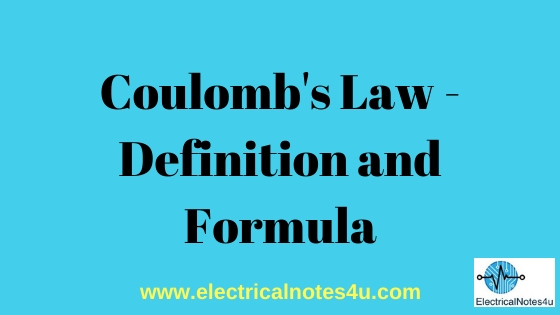Coulomb's Law - Definition and Formula
In this post, we will cover Coulomb's Law Definition and Coulomb's Law Formula that will help you to understand Coulomb's Law better.
Coulomb's Law Definition-
The mechanical force produced between two magnetic poles is produced to the product of their pole strengths, and inversely proportional to the square of the distance between them.
Coulomb's Law Formula-
In the SI System, The law is given by-
where F is the force between the poles (in Newtons), m1 and m2 are pole strengths, d is the distance between the poles in meters, μ(r) is the relative permeability of the medium in which the poles are situated, and μ(o) is the permeability of free space (in air).
μ = Absolute permeability of air (or vacuum) x relative permeability μ(r).
Know More About Coulomb's law (Wikipedia)
Best Books For Electrical Engineering
- Objective Electrical Technology By V.K.Mehta - Buy Now
- An Integrated Course in Electrical Engineering By J.B. Gupta - Buy Now
- An Integrated Course in Electrical Engineering By R.K. Rajput - Buy Now
You May Also Like-







0 comments:
Post a Comment